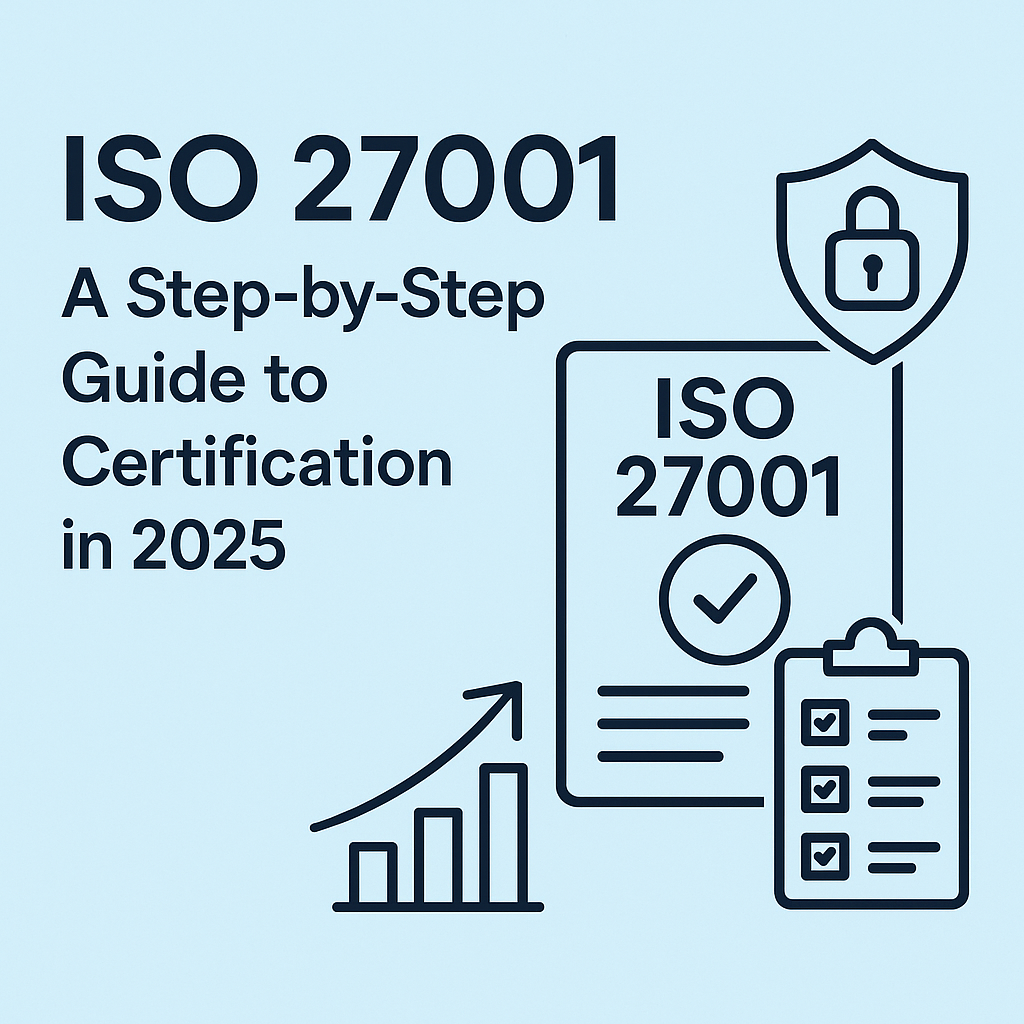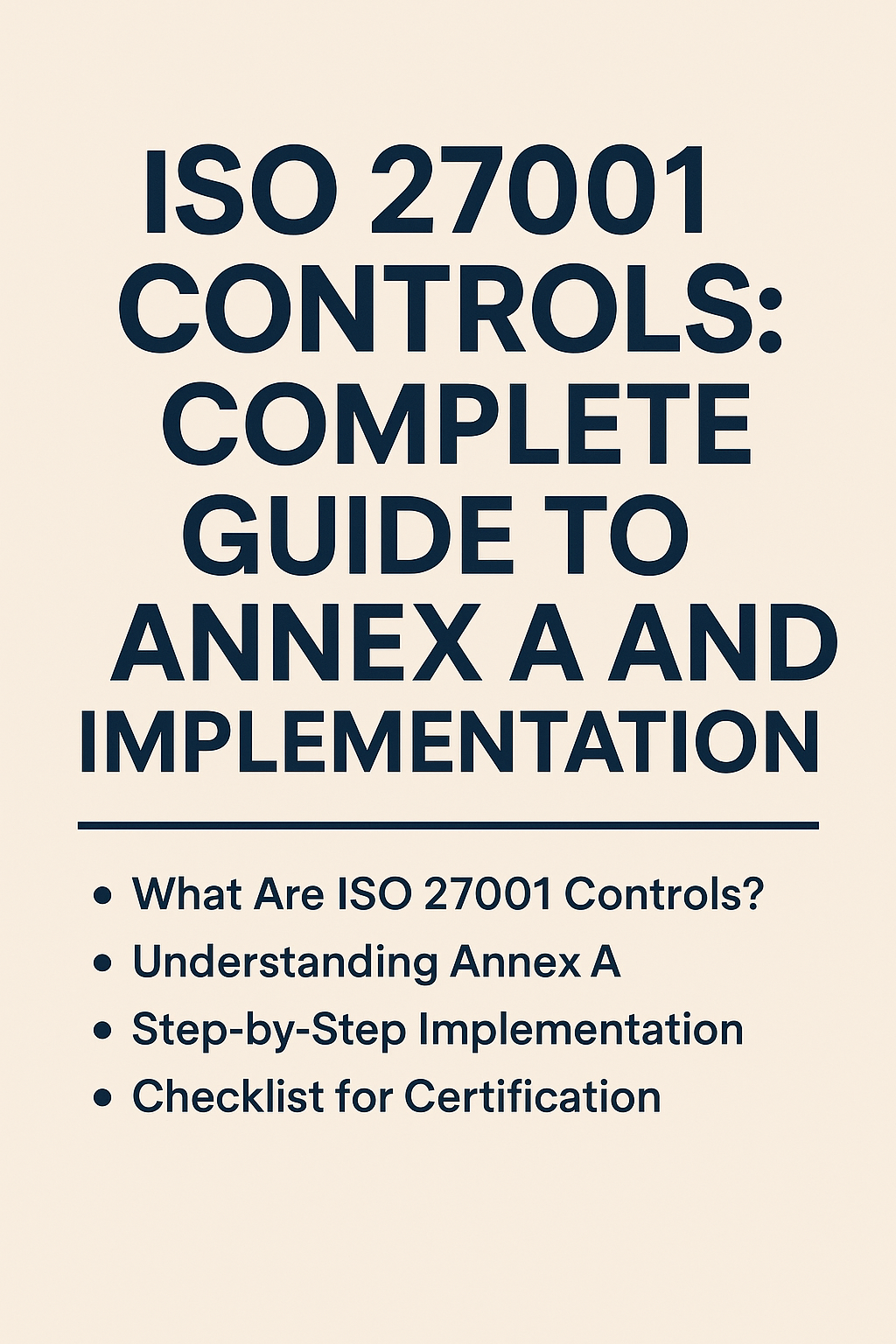ISO 27001: A Step-by-Step Guide to Certification in 2025
So you’re hearing about ISO 27001 certification everywhere lately, huh? Maybe a client’s asking for it. Maybe your sales team’s sick of losing deals without it. Or maybe you’re just tired of duct-taping your security practices together and hoping for the best.
Either way — welcome. You’re in the right place.
This guide breaks down how to get ISO 27001 certified in 2025, step-by-step. No consultant-speak. No fluff. Just a clear, realistic pathway to help you build trust, win business, and stop losing sleep over security gaps.
What is ISO 27001 and Why Is It Important in 2025?
ISO 27001 is the global standard for building an Information Security Management System (ISMS).
Think of it like your company’s playbook for protecting sensitive data — from customer info to internal assets. Getting certified proves you’re not just talking security — you’re living it.
And in 2025? Clients (especially enterprise ones) expect it. Regulators love it. Startups need it. SaaS companies depend on it.
Understanding the Latest ISO 27001:2025 Updates
While ISO 27001 doesn’t change every year, the 2022 update still matters in 2025. It introduced:
- A sharper focus on risk-based thinking
- Better alignment with other standards (like ISO 9001 and ISO 27701)
- A revamped Annex A with 93 controls (instead of 114)
Make sure your templates, audits, and controls align with the updated framework.
Key Benefits of ISO 27001 Certification for Your Business
- Earn client trust (especially in B2B deals)
- Open up new markets (many enterprise RFPs require it)
- Reduce security risks (and insurance premiums)
- Stay audit-ready (even for GDPR, SOC 2, etc.)
Plus, it just makes your ops tighter. Less panic, more process.
Step 1: Defining the Scope of Your ISMS
Before you do anything, get clear on what your ISO 27001 certification will cover.
- Is it just one product or the whole org?
- Are remote teams, contractors, or cloud platforms included?
- What are the boundaries — both digital and physical?
Pro tip: Start narrow if you’re new. You can always expand the scope later.
Step 2: Conducting a Gap Analysis for ISO 27001
Now figure out where you stand.
A gap analysis shows how your current practices stack up against ISO 27001’s requirements.
- What’s already in place?
- What’s missing?
- What’s half-baked and needs work?
Use a checklist or self-assessment tool. You’ll thank yourself later.
Step 3: Risk Assessment and Risk Treatment Plans
This is the heart of ISO 27001.
You’re expected to identify risks to your information assets and decide what to do about them.
- List your assets (systems, people, data)
- Spot the threats and vulnerabilities
- Evaluate the impact and likelihood
- Choose risk treatments: avoid, accept, mitigate, or transfer
Then document it all. (Your auditor will definitely ask.)
Step 4: Developing ISO 27001 Policies and Procedures
Your ISMS needs structure.
This means writing clear, practical policies and procedures that show how you manage info security day to day. A few must-haves:
- InfoSec Policy
- Access Control Policy
- Incident Response Procedure
- Backup & Restore Plan
Don’t overdo it. Keep policies lean, but useful.
Step 5: Implementing ISO 27001 Controls (Annex A Overview)
Remember those 93 controls? You’re expected to apply the ones that make sense for your business.
They fall into categories like:
- Organisational controls
- People controls
- Physical controls
- Technological controls
You’ll capture your selections in a document called the Statement of Applicability (SoA). It shows what you’ve implemented — and why.
Step 6: Employee Training and Awareness Programs
Your team can’t protect what they don’t understand.
Build a culture of security by:
- Running onboarding sessions on your ISMS
- Sharing updates in Slack or team meetings
- Sending regular phishing tests and refreshers
Make security part of your everyday convo — not just an annual checkbox.
Step 7: Internal Audit Process for ISO 27001
Yes, even before the big audit, you need to audit yourself.
Your internal audit checks:
- Are policies actually being followed?
- Are there gaps or risks we missed?
- Is the ISMS effective and improving?
It’s like a dress rehearsal. Fix what’s broken now, not when the auditor’s watching.
Step 8: Management Review and Continuous Improvement
ISO 27001 isn’t a “set-and-forget” thing.
Leadership should regularly review:
- Security objectives
- Audit results
- Risk status and incidents
- Opportunities to improve
Even a 30-minute quarterly meeting can do the job.
Step 9: Preparing for the Certification Audit
Alright, you’ve built your ISMS. Now prove it.
Work with a certification body (CB) to schedule your audit. They’ll do it in two stages:
- Stage 1: Documentation review
- Stage 2: Full ISMS assessment (interviews, walkthroughs, evidence review)
Pro tip: Have a “cert pack” ready. Include policies, records, SoA, risk assessments, and internal audit findings.
Common Challenges in ISO 27001 Implementation (and Solutions)
- Overengineering: Start simple and scale
- Tool overload: Don’t buy tools until your process is defined
- Lack of buy-in: Make security everyone’s job
- Poor documentation: Templates help, but tailor them to your business
How to Maintain ISO 27001 Compliance After Certification
Congrats — you’re certified!
Now, keep it alive:
- Track actions from audits and reviews
- Update your risk register quarterly
- Test incident response plans annually
- Keep training fresh and ongoing
ISO 27001 Documentation: What You Need to Prepare
You’ll need a solid paper trail. Key docs include:
- ISMS Scope Statement
- Risk Assessment & Treatment Plan
- Statement of Applicability (SoA)
- Security Policies
- Training Records
- Audit Logs
Choosing the Right ISO 27001 Certification Body
Pick a certifier that:
- Is accredited (e.g., JAS-ANZ)
- Understands your industry
- Offers value, not just a price tag
- Feels like a partner, not a police officer
Costs and Timelines for ISO 27001 Certification
- Cost range: $10K–$50K (depending on size, scope, and prep)
- Timeline: 3 to 9 months (faster if you’ve got your act together)
Don’t rush it — but don’t overthink it either.
ISO 27001 vs. Other Security Standards: What’s Different?
ISO 27001 vs:
- SOC 2: SOC is audit-only; ISO is a full system.
- NIST: NIST is a framework; ISO is certifiable.
- PCI DSS: PCI is for cardholder data; ISO covers everything.
ISO 27001 is your all-rounder. It works across sectors and tech stacks.
Frequently Asked Questions About ISO 27001 Certification
How long does it take to get ISO 27001 certified?
Anywhere from 3–9 months, depending on your prep.
Do we need a consultant?
Not always — but it helps, especially for the first time.
Can startups get certified?
Absolutely. Many do it to win big contracts.
Do we need to cover our whole company?
Nope. You define the scope.
Bottom line?
ISO 27001 certification in 2025 is a smart move — not just for security, but for growth. Start with the basics, build momentum, and remember: done is better than perfect.
You’ve got this.


